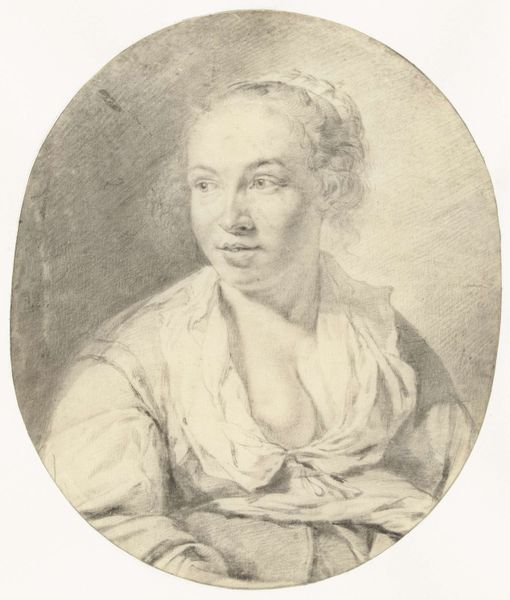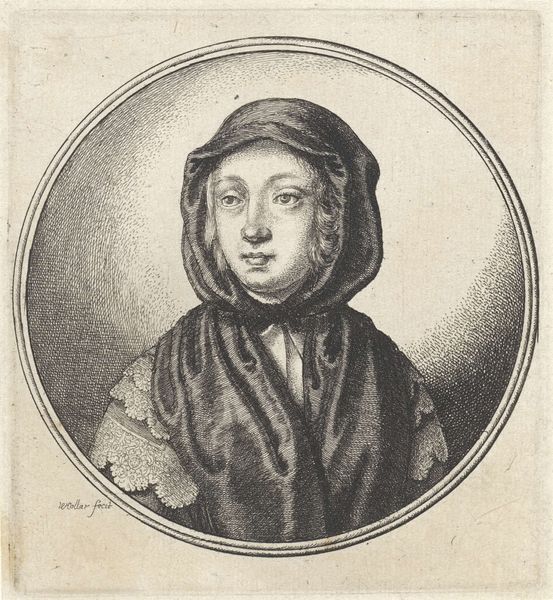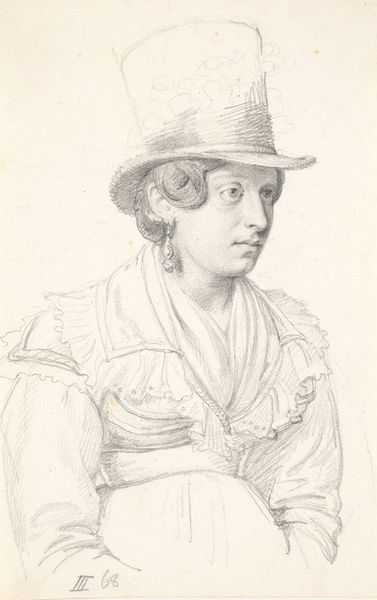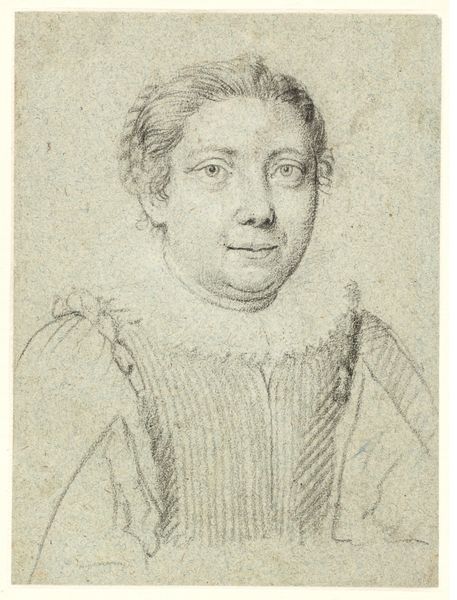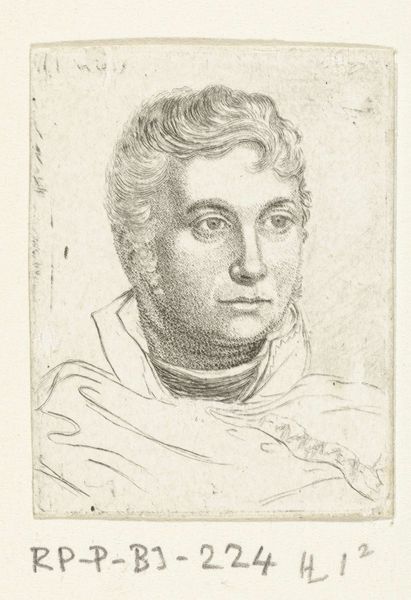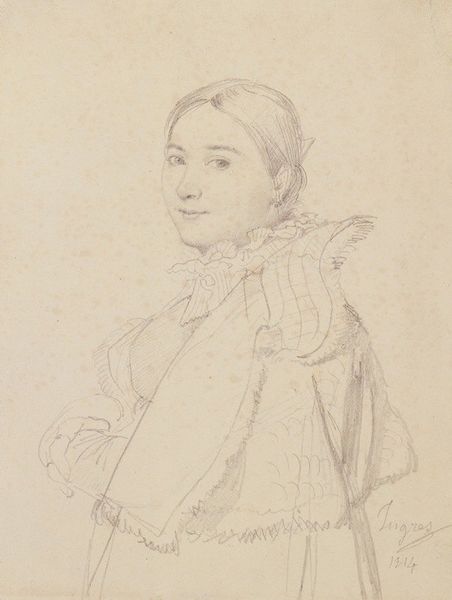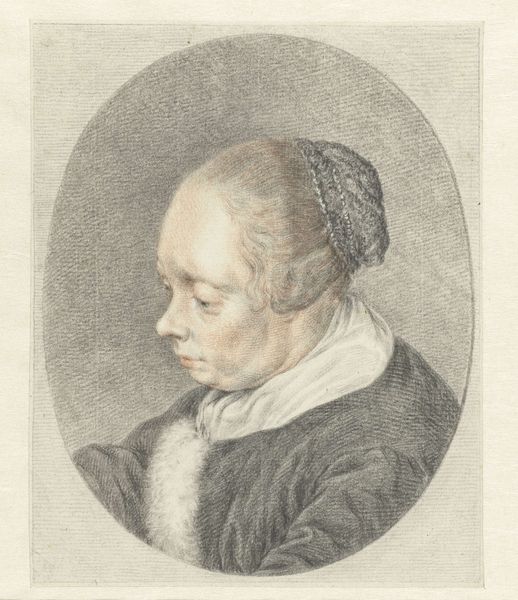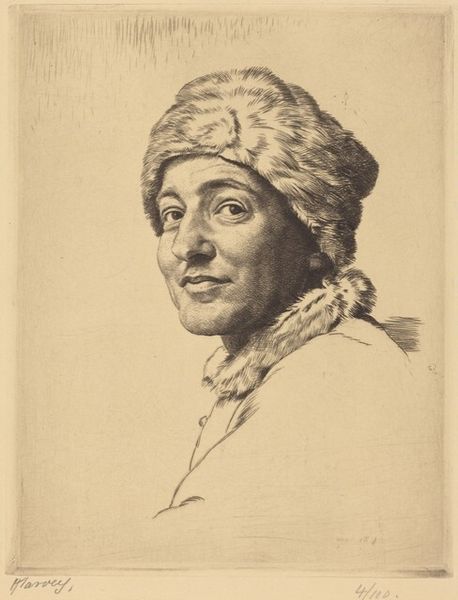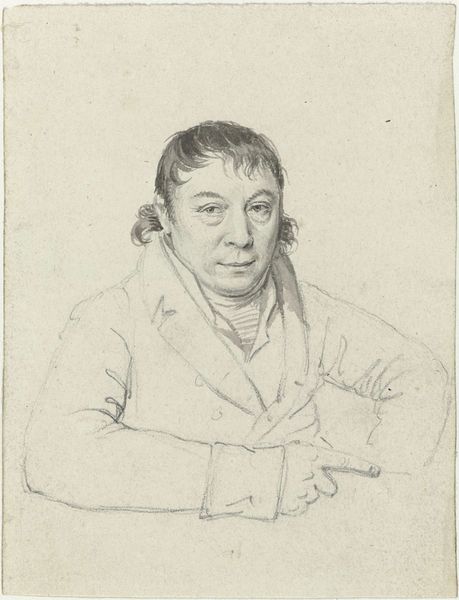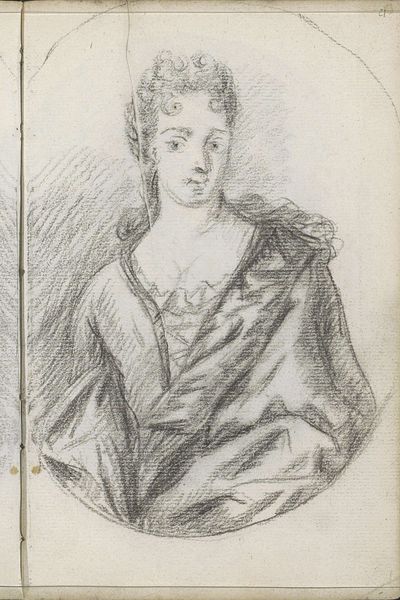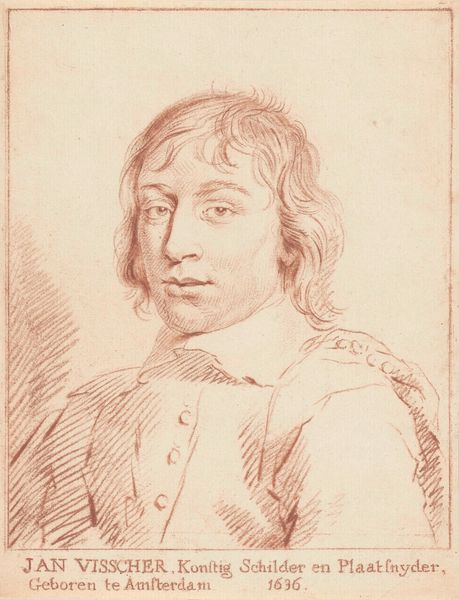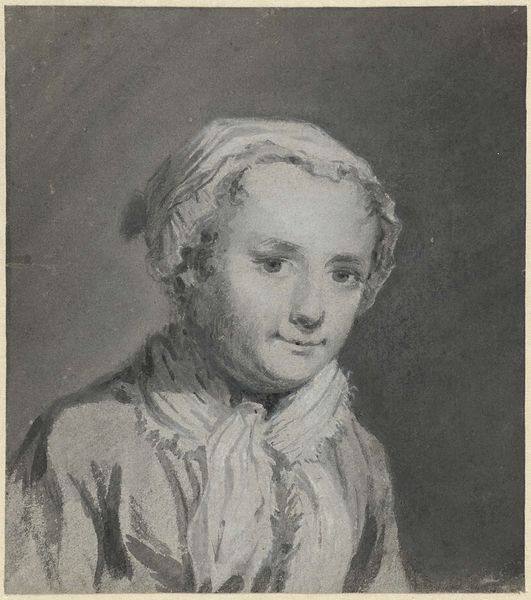
drawing, charcoal
#
portrait
#
pencil drawn
#
drawing
#
neoclacissism
#
charcoal drawing
#
figuration
#
pencil drawing
#
sketch
#
romanticism
#
portrait drawing
#
charcoal
Copyright: Public domain
Jean Auguste Dominique Ingres sketched "Alexander Baillie" in Rome, 1816, using graphite on paper. Ingres, a leading figure in the French Neoclassical movement, renders Baillie with a striking immediacy. But what does it mean to capture someone’s likeness? The concept of portraiture speaks to the social structures of 19th-century Europe where the rise of the bourgeoisie created a new market for art, with wealthy individuals eager to commission portraits as symbols of status. Note the sitter's expensive fur-lined coat. Baillie’s posture and attire reflect the visual codes of wealth and social standing. Ingres, trained in the formal academic tradition, was part of an institutional framework that dictated artistic standards. The art world of his time was heavily influenced by the French Academy, which promoted a hierarchy of genres, with history painting considered the most prestigious. Portraiture, though lucrative, was seen as a lesser pursuit. To truly understand the artwork, historians consult a range of resources: letters, diaries, and institutional records. Each artwork is contingent on the social and institutional context in which it was made.
Comments
No comments
Be the first to comment and join the conversation on the ultimate creative platform.
